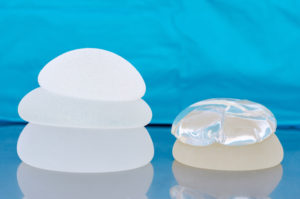What Is Capsular Contracture and How Can It Be Prevented?

The most common complication after breast augmentation is indeed capsular contracture. However, this incidence is quite rare—I have only seen it in a small handful of my patients. Most patients do very well without any major problems! That said, as a proponent of “informed consent,” I aim to educate patients about every potential complication that could occur with a particular procedure, how it might affect them and what is done to prevent and/or treat it, should it occur.
Capsular contracture describes circumferential constriction of scar tissue around a breast implant that causes the breast to feel firm, look distorted or have a sharp, round edge around it—or in the worst case, to be painful. It is graded from Grade I (the breast is soft and normal), Grade II (the breast looks normal but feels firm), Grade III (the breast is firm and visible distortion or deformity can be seen) and, finally, Grade IV (the scar tissue around the implant is painful).
The leading theory about why and how capsular contracture occurs is due to an irritant around the implant once it is in the body, such as bacteria or blood. At my practice, we take many steps to prevent introduction of bacteria around the implant and removal of blood from the implant environment to avoid capsular contracture from occurring, starting on day one.
These prophylactic measures include a dose of intravenous antibiotics at the start of surgery before an incision is made; the use of drains to remove wound fluid that is produced by the body around the implant during healing; the use of postoperative oral antibiotics until the drains are removed (three to six days on average); and instructions to avoid showering the surgical area until 24 hours after the drains are removed.
In addition, we recommend that procedures that naturally stimulate bacteria being stirred up and potentially entering the bloodstream (including teeth cleaning, dental procedures, sinus surgery, rhinoplasty, septum surgery, colonoscopy or endoscopy) be avoided for three months after surgery.

What happens at three months? Nothing magic! However, after any Plastic Surgery procedure, there will be increased blood circulation to the area that was operated on for around three months to facilitate healing. After approximately three months, the blood supply tends to return to normal in the surgical sites. In turn, the risk of bacteria entering the bloodstream and being preferentially carried to the breast implant pockets decreases.
After the three month postoperative visit, we give our patients a prescription for prophylactic antibiotics before any of the procedures listed above (procedures of the nose, mouth or gut) if they choose or need to undergo one of these treatments. This preventative step consists of a one-time dose of either Amoxicillin (or Clindamycin for those patients allergic to Amoxicillin or Penicillin) that is taken one hour before their dental/sinus/colonoscopy procedure.
After that, no additional antibiotics are needed until the next procedure (usually every six months for dental visits and every one to three years for colonoscopy). This single antibiotic dose is not enough to cause stomach upset or a yeast infection. My office provides the prescription for these antibiotics, and disclosure of breast implants to the dentist/GI doctor/etc. is not required.
If capsular contracture were to occur, it usually happens in the first one to two months after surgery. I see my patients regularly during the first three-month postoperative period to ensure they are healing well without any problems. We also teach breast implant massage, which gently displaces the implant upward in its pocket to ensure that the space created during the breast augmentation surgery stays open. (To learn more about this technique, check out our video on implant massage.)
So, what happens if capsular contracture does occur? Stay tuned for my next blog post in which I’ll be discussing various treatments for capsular contracture.
– Dr. Karen Horton, Board-Certified Plastic Surgeon
